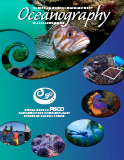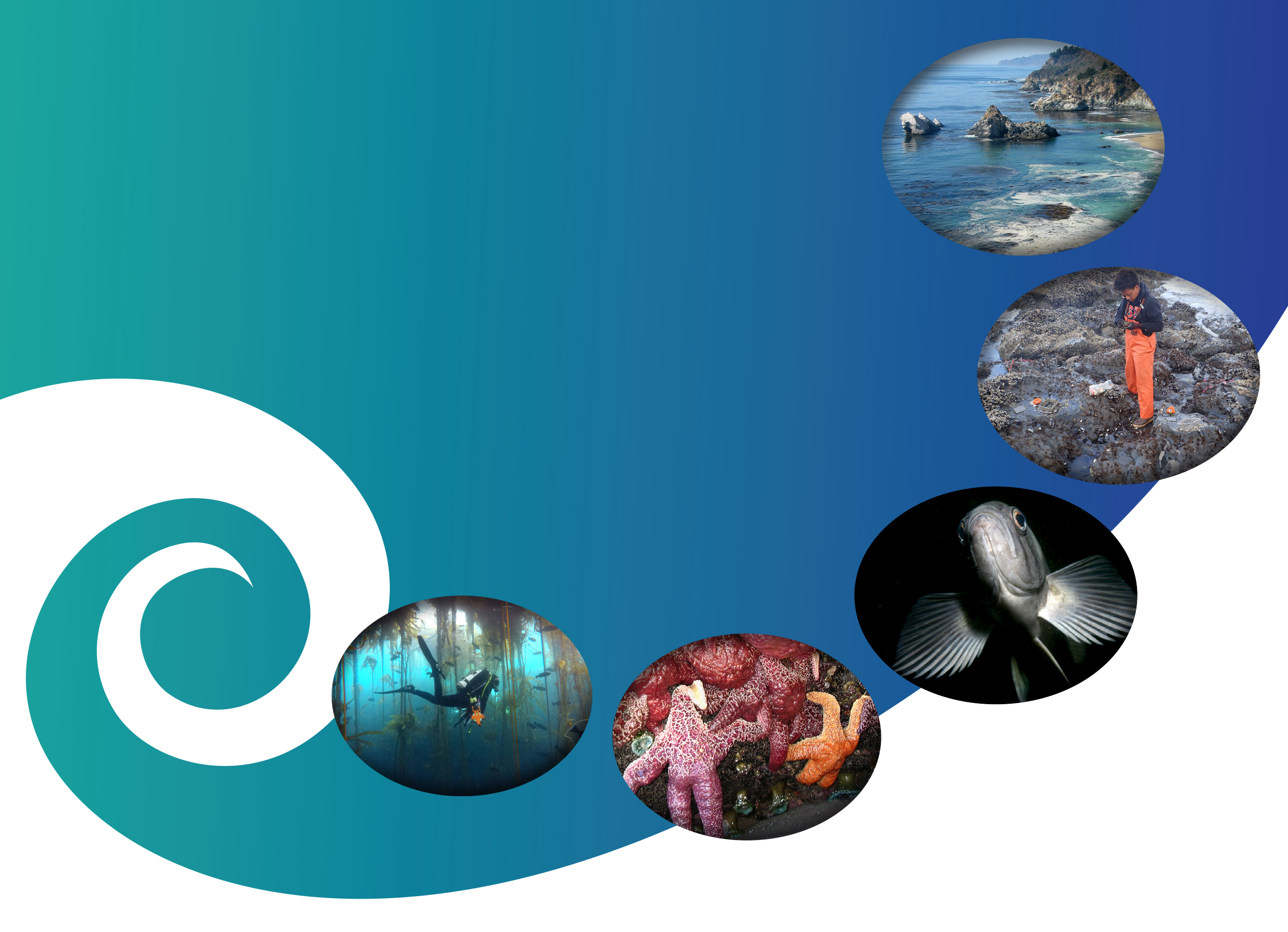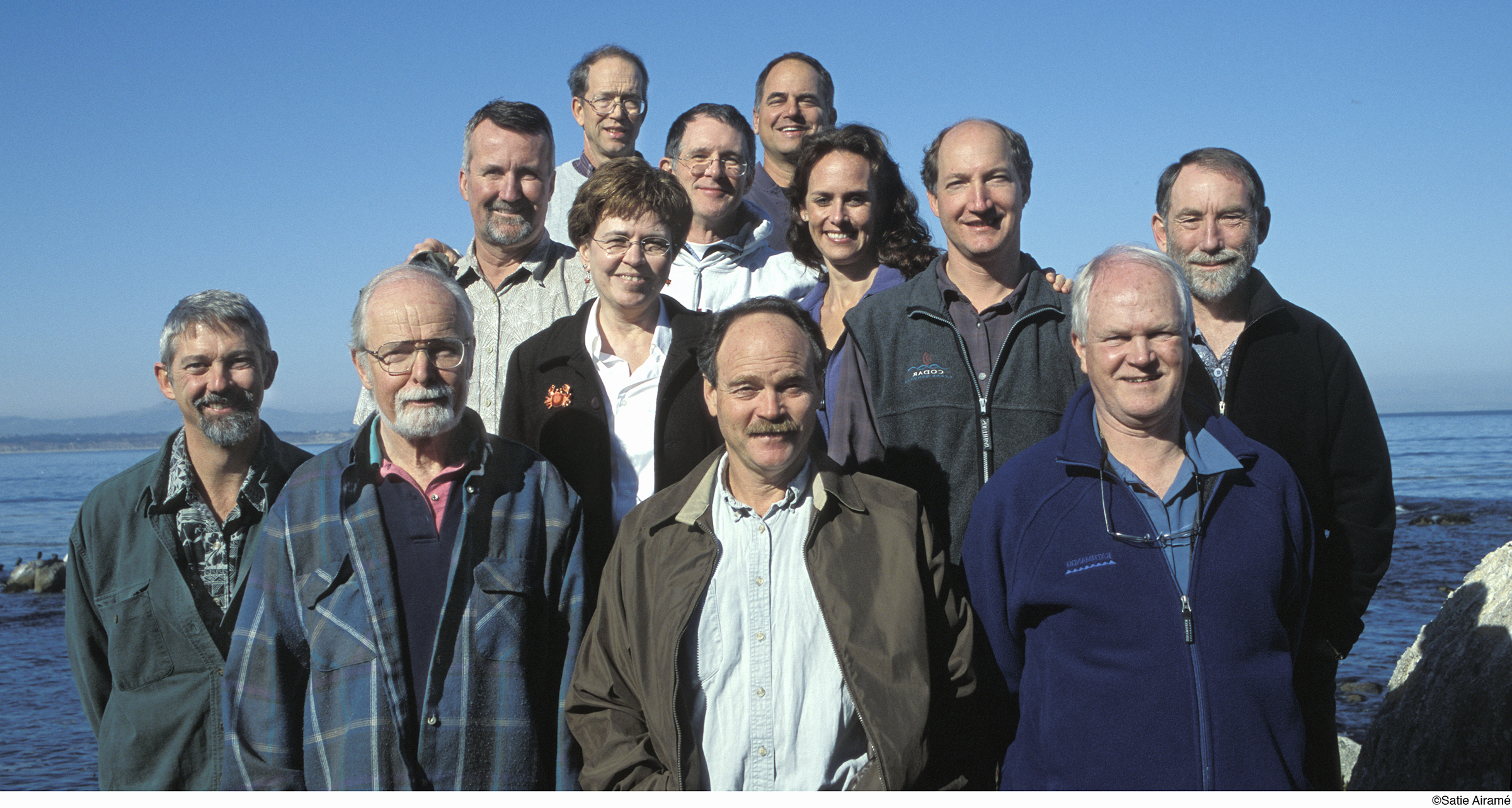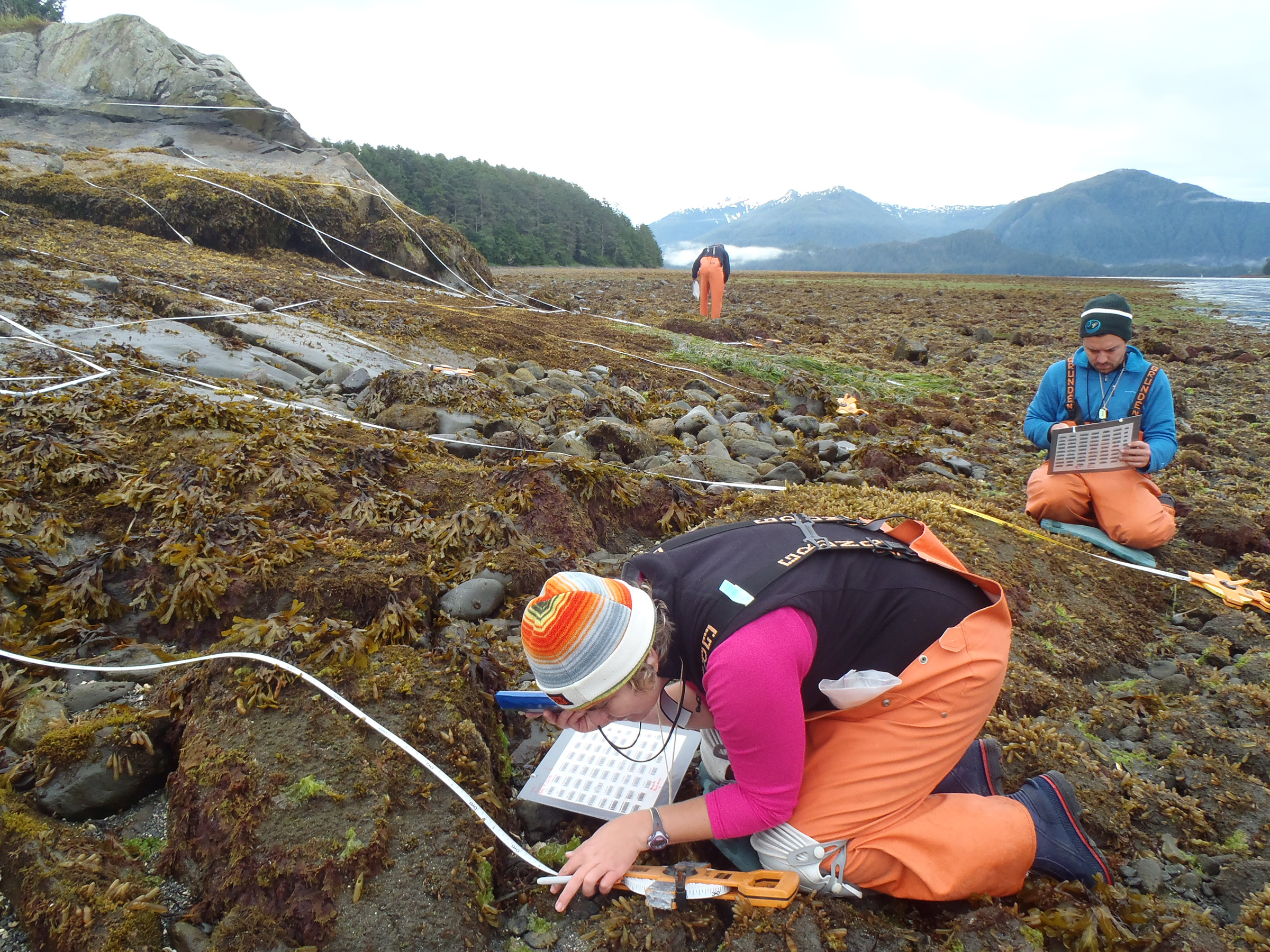Full Text
Introduction
Recognizing the value of coastal marine ecosystems for both science and society, a diverse group of scientists came together more than 20 years ago to imagine a new approach to research, education, and outreach. PISCO, the Partnership for Interdisciplinary Studies of Coastal Oceans, was launched in 1999, thanks to the vision of eight principal investigators (PIs) and generous financial support from The David and Lucile Packard Foundation.
The PISCO program has three primary goals, as lead PI Bruce Menge and colleagues describe in the first article of this special issue. They are (1) to conduct coordinated investigations of coastal marine ecosystem patterns and dynamics in the California Current Large Marine Ecosystem (CCLME), (2) to rapidly communicate science relevant to marine conservation to policymakers and managers, and (3) to build capacity in marine conservation science and policy by developing novel programs for training the next generation of interdisciplinary marine scientists.
This special issue highlights the scientific, educational, policy, and management contributions that PISCO scientists have made in the last two decades. Investigators from four core institutions—Oregon State University, Stanford University, the University of California, Santa Cruz, and the University of California, Santa Barbara—came together to study marine ecosystems in a coordinated and deliberately multiscale fashion in the nearshore ocean and in select hard-bottom habitats (e.g., rocky intertidal and kelp forests) of the CCLME. The articles that follow report on multifaceted ecological and oceanographic investigations by PISCO scientists, students, and partners in government and nongovernmental institutions, as well as resulting improved capacity for boundary work and policy and management impacts.
As individual scientists, we have had the good fortune to participate in PISCO-led activities over the last 20 years. One of us, Heather Leslie, was a graduate student in the first years of PISCO (1999–2004), and experienced firsthand what an interdisciplinary, use-inspired education in marine sciences can be. PISCO students connect to varied research arenas as part of interdisciplinary teams, and also are exposed to science and policy experts working in a variety of institutional environments, including government and state agencies and environmental nongovernmental organizations (NGOs). And, in the spirit of founding lead PI Jane Lubchenco’s expanded social contract for scientists (Lubchenco, 1998), hundreds of undergraduates, graduate students, and postdoctoral scholars have been encouraged to pursue diverse professional paths linking science to policy and management (Lubchenco et al.) and to make their science matter (sensu Baron, 2010, 2016).
|
|
Another of us, Mary Ruckelshaus, served as a scientific advisor and sometimes collaborator to the PISCO program through the years. She also leveraged PISCO findings as the program’s results regarding nearshore ocean and benthic ecosystems matured through a complementary boundary organization, The Natural Capital Project (https://naturalcapitalproject.stanford.edu/). Models drawing on PISCO scientists’ work—and that of many others—have enabled conservation action at appropriate scales in diverse social-ecological settings, from the US Pacific coast and the western Pacific to Mexico and Belize.
All of us, particularly Jon Witman, who works in places distant from one another geographically (i.e., the Gulf of Maine and Galápagos Islands) on parallel oceanographic forcing of subtidal community dynamics, watched with great interest as the PISCO program matured. Coordinated intertidal and nearshore sampling programs from Oregon through southern California—with occasional forays to Alaska, British Columbia, Washington, and the Baja peninsula—were well established by the mid 2000s (as detailed in Raimondi et al.), and the commitment of PISCO scientists and student-led research to engage early and often with state and federal marine management professionals, as well as citizen scientists, began to pay off.
Scale of PISCO Science
PISCO was deliberately designed to span the full extent of the California Current Large Marine Ecosystem, a dynamic and highly productive marine ecosystem that stretches from Baja California Sur to Alaska on the Pacific coast of North America.
In the overview article, Menge et al. describe the motivation for PISCO and how the group forged the collaboration more than 20 years ago. This article also details the evolution of PISCO as a research and education collaborative, from its inception in 1999 through today.
Connecting Ecosystems
In the special issue’s third article, Menge et al. detail the core scientific focus of PISCO—to integrate coastal oceanographic and benthic ecology approaches in order to understand marine ecosystem dynamics over multiple spatial and temporal scales, and to understand these valuable ecosystems’ responses and resilience to environmental change.
The complex life histories of many marine species, where larval and juvenile organisms often occupy different habitats than adults of the same species, and larval stages are more mobile than their parents, have challenged ocean scientists’ understanding of marine community patterns and processes for decades. With the growing pace and visible impacts of climate change, untangling these multiscale dynamics is all the more important.
White et al. synthesize contributions that PISCO investigators have made regarding how connectivity, dispersal, and recruitment of benthic marine species shape dynamics of the California Current and other large marine ecosystems. The sidebar by White et al. provides a great tutorial in the diversity of methods that marine scientists have used to investigate connectivity among marine populations. This brief piece also very well illustrates one of the core lessons of PISCO’s two decades of integrative research: new scientific tools are often high risk and high reward. For example, ecologists who hoped to map the connections among marine populations using chemical signatures embedded in otoliths and other calcified structures in marine invertebrates and fishes have found that the cost of creating these maps may not be worth the investment. Such information is invaluable in designing new, and adapting existing, monitoring programs for marine ecosystems.
|
|
Taking the Long View
PISCO founding PI Peter Raimondi and colleagues describe how the program’s attention to multiple spatial and temporal scales and commitment to coordinated long-term surveys of intertidal biodiversity have generated new understanding of biogeographic patterns and processes in the CCLME. These findings also have proven invaluable for informing government responses to acute environmental disasters such as oil spills and hypoxia events as well as for enabling systematic assessment of longer-term, more slowly emerging changes in coastal marine ecosystem structures and dynamics, such as population and ecosystem-scale responses to marine reserve designations and marine disease outbreaks.
In the issue's sixth article, Menge et al. highlight PISCO’s contributions to understanding the impacts of climate variability and change on coastal marine ecosystems of the CCLME, founded on mechanistic tests at the population and community scale. The sea star wasting disease that impacted intertidal to inner-shelf marine ecosystems beginning in 2013 could be tracked in real time, thanks to the baseline established by the PISCO program. As sea star populations in some places began to recover, PISCO scientists and students were able to document and understand these patterns and their community-wide consequences. Chan et al. detail the approach that PISCO enabled to track another ecological surprise, dramatic hypoxia events first observed off the Oregon coast in 2002. Similar approaches have been used to illuminate patterns of ocean acidification throughout the CCLME, and particularly the consequences for nearshore marine ecosystems in upwelling-dominated systems like the CCLME.
Palumbi et al. synthesize DNA-based insights into organisms’ responses to climate change that have emerged from long-term PISCO studies of physiology, genomics, and evolution. They conclude that the high level of adaptive genetic variation observed in many of the projects suggests that marine populations have significant ability to respond evolutionarily in the face of climate change. Nonetheless, “many questions remain about how fast, complete, and effective this evolution will be.”
Connecting Science and Policy
The last three articles in this special issue focus on how science conducted through the PISCO program has been applied to help support marine conservation and fisheries management decision-making, particularly at state and regional scales on the US Pacific coast. Founding PISCO PI Mark Carr and colleagues describe the iterative and close interactions among PISCO scientists, stakeholders, and other decision-makers in the context of the assessment and design of California’s marine protected area network.
Lubchenco et al. tell the story of the PISCO program’s contributions to marine reserve design and monitoring throughout the CCLME over the last two decades. These contributions have been the result of innumerable hours in the field, on docks, at public meetings, and in the halls of government. Through this hard work by PISCO scientists, students, and many, many partners, the coastal marine ecosystems of the CCLME are now better understood and better protected than they were before PISCO began. The related sidebar by Grorud-Colvert et al. highlights the importance of PISCO’s marine reserve science not only to the CCLME but also internationally. The Science of Marine Reserves booklet, first published in 2002, has since been tailored and translated for people in more than 58 countries.
The special issue closes with an article by Kroeker et al., who describe how scientific results and capacity created through PISCO can be leveraged to “manage for resilience,” referring to a focus on marine management strategies that “promote the resistance and recovery responses of populations and ecosystems to disturbance.” As these authors note, empirical evidence for the impacts of focused efforts to manage for marine ecosystem resilience in the face of climate change is limited. However, they believe there is great promise for such strategies to be successful, not only in the CCLME but also globally. A key element to such success, however, is integration of understanding of the social context within which marine conservation strategies are undertaken, as discussed by Leslie et al. (2015), Bennett et al. (2016), and many others. By recognizing the diverse connections between people and marine ecosystems and pursuing science that is attentive to both social and ecological context, we will be in a much stronger position to identify and scale up successful marine conservation efforts (Ruckelshaus et al., 2008).
|
|
Summary
PISCO provides a template for studying marine ecosystem dynamics at the large spatial and temporal scales needed to understand how oceanographic processes influence marine life dwelling on temperate rocky shores and nearshore reefs. Consequently, we are now better poised to understand how climate change in the North Pacific Basin drives variability in the CCLME and ultimately influences community structure and species interactions in coastal marine communities. This knowledge is vital for informing marine policy and management.
While these articles and many other outcomes over the last 20 years clearly demonstrate the value for the CCLME of large-scale, long-term programs such as PISCO, where studies of marine ecosystem dynamics are linked with education and capacity building, there are still challenges to adapting the model in other places. Sustaining funding requires a portfolio approach, as Menge et al. note in the opening article; in addition to The David and Lucile Packard Foundation, PISCO activities also have been supported by the Gordon and Betty Moore Foundation, US National Science Foundation, and private donors, among others.
There are also still impediments in academic and government cultures to PISCO-like programs, although they have diminished significantly in the last 20 years. The value of team science and interdisciplinary, use-inspired approaches to understanding ecosystem change are much more widely understood than before (NRC, 2015). Scientists’ interest in engaging in science-policy processes is growing, but such commitments take time, and incentives are often not aligned with the goals of traditional institutions (Hallett et al., 2017). Thanks to PISCO, a new generation of marine scientists, stakeholders, and decision-makers now understand the rewards of working together to co-develop science-based solutions for coastal marine policy and management. Support for this growing model of boundary science should be explicit in research institutions, NGOs, and government decision-making (Enquist et al., 2017). The ethos and experiences of the students trained by PISCO and other long-term, large-scale networks, for example, those trained at Long Term Ecological Research sites and through The Natural Capital Project, give us hope that the institutional landscape will continue to evolve to encourage and enable PISCO-like projects to take root and flourish in other geographies.
As scientists and society at large continue to seek new ways to understand and apply knowledge of how humans can contribute to sustainability of our coasts and ocean, we anticipate that the approach and impacts of the PISCO program will be all the more salient. We look forward to observing how the connections among marine scientists and decision-makers evolve over the next 20 years in the CCLME, and to witnessing the development of other models of large-scale ecosystem science programs that we anticipate PISCO and this issue will inspire.




